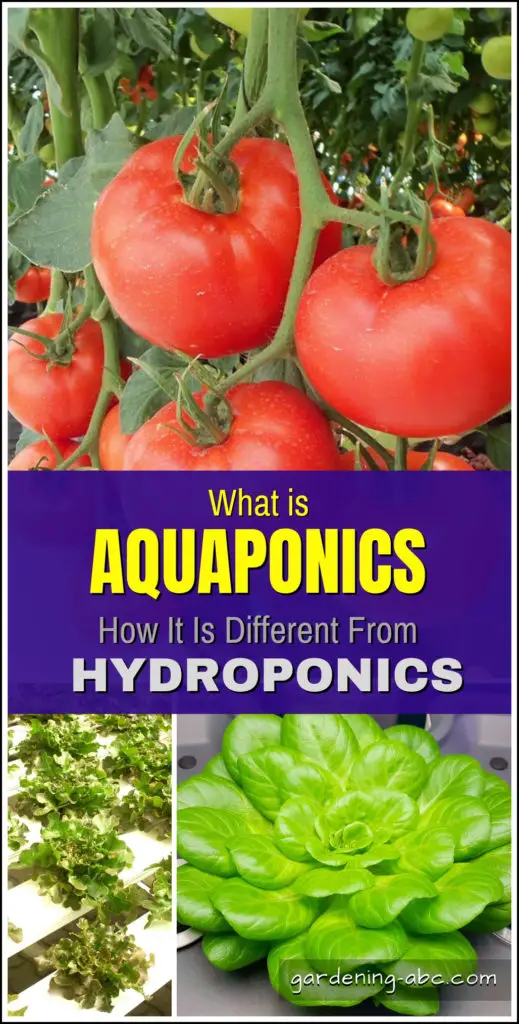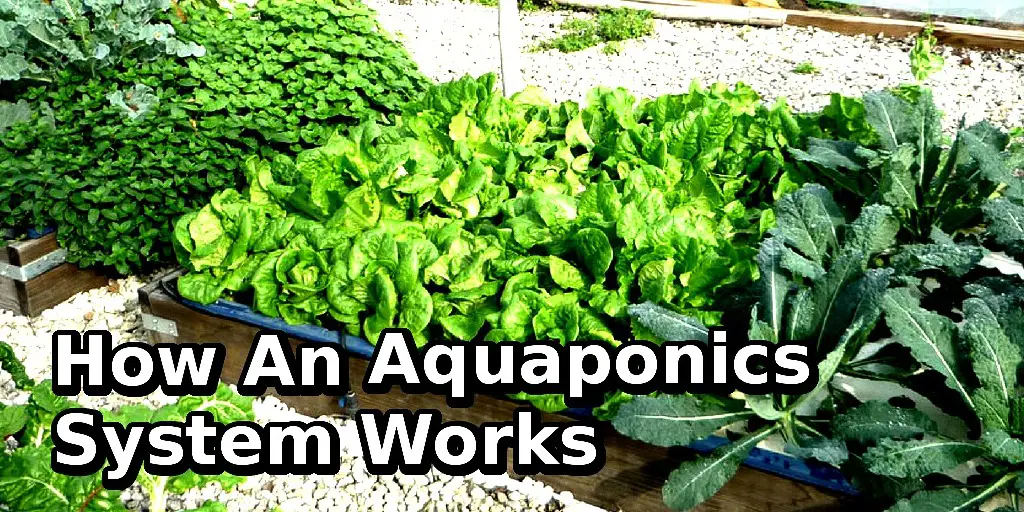We use affiliate links to run our site. When you buy through links on our site, we may earn an affiliate commission, without any added cost to you. Learn more
In this edition of Gardening ABC, we will discuss one new concept in gardening, known as Aquaponics. It is a sustainable and efficient way of growing fish and plants together, where the waste produced by the fish is converted into nutrients for the plants, while the plants purify the water for the fish.
We have already discussed the basics of vertical gardening and container gardening and their benefits In our earlier articles. In this article, we will explore the basics of aquaponics, its benefits and challenges, and how you can start your own aquaponics system.
So let’s begin…
What is Aquaponics?
In layman’s terms, Aquaponics is growing fish and plants together in one integrated system. This system is a combination of Aquaculture and hydroponics. Here the fish provides nutrition for the plants and plants filter the water for the fish.
Why Should You Do Aquaponics?
Before discussing the obvious benefits of the aquaponic system, first, let’s discuss some of the most common problems of traditional gardening.
- Weeds, pests, and diseases (mostly soil-bourne).
- High usage of water.
- Labor intensive and can cause back pain, especially for older people.
- They are usually located far (traditional farms) from the place where they are consumed.
When you shift to Aquaponics here are some of the amazing befits you will witness:
- You can put an Aquaponic system anywhere you want it requires very little space.
- An optimum height aquaponic system eliminates back strains, and it also protects your plants from small-sized animals.
- Aquaponics uses the least amount of water (more on this later) and gives you veggies that taste best.
- It is a mini ecosystem. So your time and money are both saved.
- No use of chemicals.
- No soil, so no soil-bourn diseases.
- You can have both plants as well as fish in your garden.
Difference Between Aquaponics and Hydroponics Systems:
Most of us have heard about hydroponics, it is a system where plants are grown without using soil and cultured in water only. Here they generally use chemical fertilizers for the nutrition of the plants.
The Aquaponics system goes one step further. It uses fish in the water to provide nutrition to the plants. Thus it makes the total system organic.
Like hydroponics, it also does not use soil. The roots of plants are generally kept directly in the water. In some cases, roots are supported by some rocks inside the water.
The Basics of Aquaponics System:
Parts of An Aquaponics System:

The three main parts of an aquaponics system are:
- Fish tank
- Grow bed, and,
- Pump (to move the water from the fish tank to grow bed).
How Does An Aquaponics System work?
In the fish tank, we have fish, water, and bacteria. You give food to the fish and they produce ammonia-rich waste. The bacteria are present in both the fish tank and the grow beds. They break down ammonia into nitrates and nitrites.
The water from the Aquaponics fish tank then goes to the grow bed. There it provides much-needed nutrition, to the plant. The plants take these nitrates and nitrites as nutrients. These work as fertilizer.
The plants in the system act as the cleanser. It clears the water and drains it back into the fish tank.
The much-needed oxygen enters through the pump. This oxygen is crucial for the survival of plants and fish.
How To Choose Fish In Aquaponics Culture?
In Aquaponics culture, your choices of fish and plants are very important. It is better to use freshwater fish which we generally found in landlocked lakes or rivers. If you choose seawater fish you will limit the options of plants severely.
Try to avoid ornamental fish such as Goldfish if you have any plans for eating fish. They are commonly treated with chemicals and sometimes can cause cancer in a human.
The best options that you can use are common fish like catfish, tilapia, trout, etc. Adjust the size and temperature of the water inside, once you decide on the type of fish. For example, fish like catfish grow long so you need enough space for them.
Also concentrate on your gardening goals, like if you plan to grow cool-weather plants like spinach or peas avoid fishes that love warm water.
Is Aquaponics System a Sustainable System?
The following are the main reasons why aquaponics is a sustainable system:
- As aquaponics recirculate water between fish and plants, the water wastage in this system is a bare minimum.
- Aquaponics eliminates the need for soil in growing plants. It works on soilless media. Just by removing the soil, it also removes many soil-borne diseases and most of the labor like composting, tilling adding fertilizers, etc.
- In aquaponics, you can grow all most any plant irrespective of their soil preferences. It allows food to be produced in many places that would not otherwise be able to grow. You can set up the infrastructure inside the greenhouse, warehouse, or outdoors where the weather permits.
- The Aquaponics system is self-sufficient. The plants get the nutrients from the fish and get the water cleaned by the plants. It mimics a natural ecosystem and produces many nutrients that plants need without adding any chemicals.
- Aquaponics doesn’t produce any waste. So there is no need for garbage disposal.
- If you think the cost of setting up aquaponics is high just consider the amount of money you spend today, buying fruits and veggies that are not only costly but also unhealthy. In the long run which hurts you more?
Usage of Water in Aquaponics System:
The way the water is used in the Aquaponics system is quite amazing. It doesn’t discharge the water but rather reuses and circulates continuously. The basics of Aquaponics is having a symbiotic relationship between plants and fish.
The environment remains more or less constant in terms of nutrients and oxygen levels. The water loss happens only in terms of transpiration and surface evaporation which is very less when you compare it with traditional forms of gardening.
It is calculated as 2% of the water of conventional irrigated farms. So if your area receives very less amount of water, you know you need to switch to Aquaponics.
Pest Management in Aquaponics System:
The Aquaponics system also has pest problems like any other form of gardening. Some of the most common pests are aphids, caterpillars, beetles, bugs, etc. You need to take care of the pests or they might severely harm your production.
The best way to do this keeps your system organic and chemical-free. Use common organic pest control techniques like traps, physiological barriers, and biological control for repelling pests. One of the most preferred ways is using beneficial insects.
Benefits of Aquaponics System:
The Aquaponics system works most of the time independently. The fish and plants work together and the water gets recycled. You just need to replace the water which has been evaporated from the system.
- Once you created the system you don’t need to add fertilizers regularly or weed it.
- It gives you the chance to reduce your Carbon footprint as you don’t need to travel to get your food.
- It reduces water consumption in gardening.
The Future Prospects:
Aquaponics is a rapidly growing industry, with increasing interest from farmers, entrepreneurs, and researchers. The technology is continually evolving, with innovations such as vertical aquaponics, automated systems, and the integration of renewable energy sources.
Aquaponics has the potential to revolutionize the way we grow food, providing a sustainable and efficient solution to the challenges of traditional agriculture.
Conclusion:
Aquaponics is a sustainable and efficient system of agriculture that combines aquaculture and hydroponics. It offers numerous benefits, including sustainable resource use, high yields, reduced environmental impact, and fresh and healthy produce.
However, it also has some challenges, such as careful monitoring and management, high initial costs, and limited plant and fish species.
If you are interested in starting your own aquaponics system, do your research, choose the right fish and plants, design and build your system carefully, and maintain it regularly.
We encourage you to take action and try out aquaponics for yourself, whether on a small or large scale. By doing so, you can contribute to reducing the impact of conventional agriculture and promoting sustainable food production.
Don’t forget to share this post with others who might be interested in learning about aquaponics and check out our website for more informative and engaging articles on related topics.

Amazon and the Amazon logo are trademarks of Amazon.com, Inc, or its affiliates.
